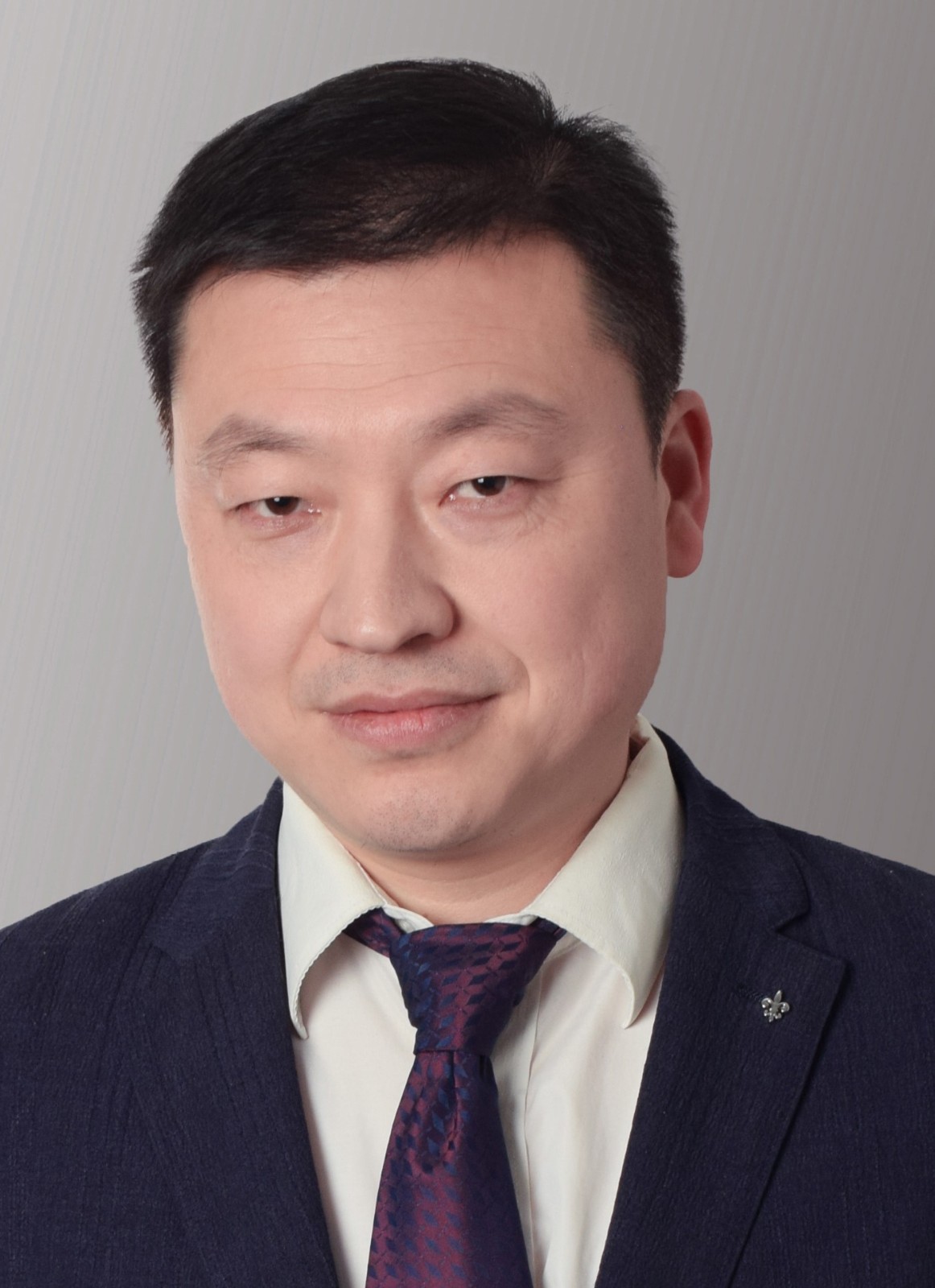

Prof. Kai Yang
Huazhong University of Science and Technology, China
Title: Research on Direct-drive PM motor
Abstract:
Direct-driving permanent magnet machine is the key component of advanced equipment such as construction machinery, power equipment, electric vehicles and intelligent appliances. In the direct drive system, the gear box is no longer required, thus the shaft of the machine is coupled with the load directly. In this case, any torque ripples from the machine will be directly passed to the load. Therefore, for direct drive system, it is vital that the torque quality of the machine be guaranteed. To reach higher torque density and lower torque ripple, a novel axial-radial flux permanent magnet machine (ARFPMM) and its control system are proposed. T-type SMC core, axial rotor, and radial rotor are applied to support axial-radial flux path and make full use of the space. A dimensionality reduction method is proposed to transform the FEA model from 3D to 2D. A new topology of fractional slot concentrated winding (FSCW) with unbalanced phase belt is proposed, which reduces the harmonic magnetomotive force by 76%. On the other hand, the torque ripple of the machine is also relevant to the harmonic components of the current. Therefore, the control strategy of such kind of machine is also worth researching. To suppress current harmonics of the machine, a novel ADRC controller combining a complex coefficient extended state observer (CCF-ESO) is proposed. Then, the current loop ADRC controller based on the CCF-ESO is able to achieve a desired AC disturbance rejection performance. Experimental results shows that the proporsed method can reduce the 6th order harmonics of d- and q-axis by 42%.
Experience
Prof. Kai Yang, associate dean of School of Electrical and Electronic Engineering (SEEE), Huazhong University of Science and Technology (HUST). Visiting scholar at the University of Leuven in Belgium and visiting professor at the University of Changwon in Korea. In recent years, he has presided over four National Natural Science Fund projects, two major national science and technology projects, one national support plan, one 863 Project, one provincial fund, one international cooperation project, and more than 40 other school-enterprise cooperation projects. He has published more than 200 papers of the first author in the important academic journals at home and abroad, among which 170 papers are included in Sci/ei. There are 25 patents for invention and 38 patents for utility model.

Assoc. Prof. Zhongyu Li
University of Electronic Science and Technology , China
Title: Passive Radar Ship Target Detection and Imaging Technology
Abstract:
This report focuses on the passive radar vessel target detection using BeiDou navigations satellites as opportunistic sources. The detection method and the first experimental results are given in this report.
Compared with the active radar, the lack of dedicated transmitters reduces the cost of passive radar. Its bi-/multi-static configuration offers the capabilities of anti-stealth and anti-jamming. From a passive radar perspective, BeiDou constellation is particularly attractive since it provides the potential for persistent monitoring anywhere in the world, including the poles. And any point is simultaneously illuminated by 4-8 BeiDou satellites from different angles. Thus, vessel target detection is potentially achieved using BeiDou-based passive radar.
In this report, the BeiDou-based passive radar vessel target detection methods respectively for the bistatic configuration and multistatic configuration are introduced, which can be summarized as follows:
(1) For the bistatic configuration, the long-time integration of vessel is performed after correcting the range and Doppler migrations. As a result, the target SNR is effectively increased, providing a reliable vessel detection performance.
(2) For the multistatic configuration, the space-time integration of vessel is performed after compensating the differences in range and Doppler between multiple echoes, which improves the target detection performance and provides the capability of target localization
Experience
Assoc. Prof. Zhongyu Li is the winner of the Outstanding Doctoral Society Award of the Chinese Institute of Electronics, and he was successfully selected for the China Postdoctoral Innovative Talent Support Program. He received the B.S. and Ph.D. degrees in Electronic Engineering from the University of Electronic Science and Technology of China (UESTC), Chengdu, China, in 2011 and 2017, respectively. From 2015 to 2016, he was a visiting Ph.D. student with the Department of Information Engineering, Electronics and Telecommunications, Sapienza University of Rome, Rome, Italy. He is currently an associate professor with UESTC. His research interests include synthetic aperture radar technology (particular emphasis on bistatic/multi-static SAR moving target detection and imaging technologies). He has published more than 60 journal and conference papers. He received the “Excellent Paper Award - First Prize” at the 2019 6th Asia-Pacific Conference on Synthetic Aperture Radar. He was the TPC member of 2020 IEEE Radar Conference, 2019 APSAR, and the section chair of the 2021 CIE International Conference on Radar, 2020-2021 IEEE ICET, ALLSENSORS 2019, and 2020 ICCC. He served on the editorial boards of the “Modern Radar”, and is the topic editor of “Frontiers in Signal Processing".

Assoc. Prof. Wei Wei
Xi'an University of Technology, China
Title: Based on IoTs Parking Navigation with Continuous Information Potential Field research
Abstract:
As Internet of Things(Iots ) are increasingly being deployed in some important applications, it becomes imperative that we consider application requirements in in-network processes. We intend to use a WSN to aid information querying and navigation within a dynamic and real-time environment. We propose a novel method that relies on the heat diffusion equation to finish the navigation process conveniently and easily. From the perspective of theoretical analysis, our proposed work holds the lower constraint condition. We use multiple scales to reach the goal of accurate navigation. We present a multi-scale gradient descent method to satisfy users’ requirements in WSNs. Formula derivations and simulations show that the method is accurately and efficiently able to solve typical sensor network configuration information navigation problems. Simultaneously, the structure of heat diffusion equation allows more flexibility and adaptability in searching algorithm designs.
Experience
Dr. Wei Wei is an associate professor of School of Computer Science and Engineering,Xi'an University of Technology, Xi'an 710048, China. He is a senior member of IEEE, CCF. He received his Ph.D. and M.S. degrees from Xi'an Jiaotong University in 2011 and 2005, respectively. He ran many funded research projects as principal investigator and technical members. His research interest is in the area of wireless networks, wireless sensor networks Application, Image Processing, Mobile Computing, Distributed Computing, and Pervasive Computing, Internet of Things, Sensor Data Clouds, etc. He has published around one hundred research papers in international conferences and journals. He is an editorial board member of FGCS, IEEE Access, AHSWN, IEICE, KSII, etc. He is a TPC member of many conferences and regular reviewer of IEEE TPDS, TVT, TIP, TMC, TWC, JNCA and many other Elsevier journals.

Assoc. Prof. HILAL Imane
School of Information Sciences/ Department of Data and Knowledge Engineering, Morocco
Title: Recent trends in cloud computing applications and challenges in industry and research
Abstract:
The increasing use of Cloud computing due to the actual pandemic worldwide situation, and the enormous evolution of its services to meet the lockdown requirements, has caused many issues and challenges. in parallel, the volume of Big Data is exponentially growing, making its use for analytics purposes complex and problematic. Moreover, the quality of the captured Data impacts its analytics directly. In fact, if the data is not available, reliable, confidential, integral, and maintainable, the resulting decisions will be incoherent, biased, Or/And illegal. Therefore, to successfully conduct a Big Data project, it is necessary to dispose of data that meets the dependability requirements and select a suitable cloud service to process it correctly.
The main objective of this talk is to present our work which focuses on providing a solution to the problem selection of the pertinent cloud service adapted to dependable Big Data. However, many trends and challenges will be discussed to open new horizons for researchers and industrials.
Experience
Dr. HILAL Imane is an Associate professor at the Department of Data, Content, and Knowledge Management of the School of Information Science (ESI), Rabat, Morocco. She Graduated from ENSIAS, University Mohamed V in 2009 as IT Engineer she got a Ph.D degree from University Hassan II in 2016. Passionate about computer science, she has been teaching IT for more than 10 years. During 2020, she got two professional certifications in cloud computing from Oracle and Huawei and a professional certification in Artificial intelligence (AI) from Huawei. She is currently the chair of the ASIS&T Africa Chapter, and the treasurer of the Research Center on Information and Data Science (RCIDS) hosted in ESI Rabat. She was involved in the organization of many International Scientific Conferences: SyscobIOTs19, ICSSD’19, SADASC'20, and ICSSD’21. Her main research areas are Cloud computing, E-healthcare, E-Learning, Decision support systems, and software dependability. She is a permanent reviewer in the International Journal of Computer Engineering and Data Science (IJCEDS), AiScholar and Editor Board member in InformationMatters.